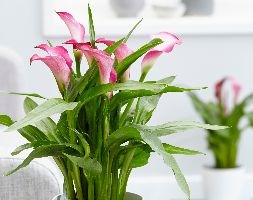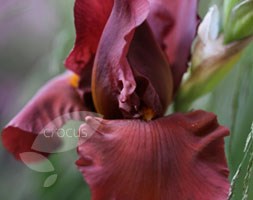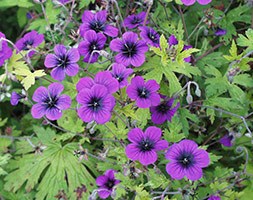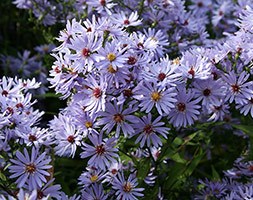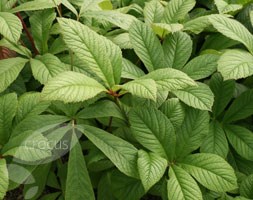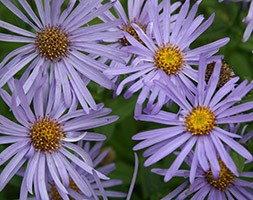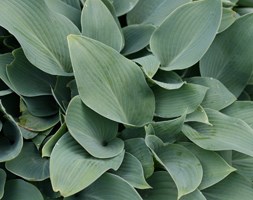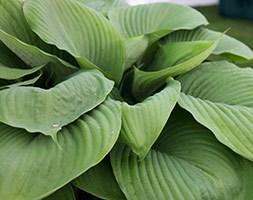New products at Crocus
by Sarah - February 3rd, 2016.Filed under: Crocus, New Products.
Crocus has these new items today
Zantedeschia ‘Garnet Glow’ (calla lily) £12.99
Position: bright but indirect light Soil: fertile: good potting compost Rate of growth: Flowering period: Hardiness: tender (indoors only) Current height: approximately 50cm (including pot) Pot covers: choose a 14cm pot cover to give a good fit over the pot. Home care:
Iris ‘Dutch Chocolate’ (bearded iris) £8.99
Position: full sun Soil: well-drained, neutral to slightly alkaline soil Rate of growth: average Flowering period: May and June Hardiness: fully hardy An unusual new introduction with rich brown, fragrant, ruffled blooms in May an d June. It not only looks great, but actually flowers for longer – sometimes up to four weeks – often with repeat performance in the autumn if the weather is hot and dry. Lovely in drifts in a sunny border. Garden Care: Plant shallowly with the upper part of the rhizome sitting on the surface of the soil, incorporating a low nitrogen fertiliser in the planting hole. After planting remove the upper-most third of the leaves to protect against wind-rock. In exposed areas stake with bamboo canes in early spring. Remove the stems after flowering from the base as this will concentrate the plant’s energy into producing new rhizomes. Divide and replant about every three years.
Geranium ‘Ann Folkard’ (cranesbill) £6.99
Position: full sun or partial shade Soil: fertile, well-drained soil Rate of growth: vigorous Flowering period: July to October Hardiness: fully hardy Vivid magenta, saucer-shaped flowers, each with a near-black eye and veining, appear in profusion on the long, scrambling stems from midsummer to mid-autumn. The foliage, which emerges yellowish-green, darkens as it matures, forming an attractive contrast. Garden care: In autumn, rejuvenate plants that are beginning to look jaded by removing old flowered stems and leaves.
Symphyotrichum ‘Little Carlow’ (cordifolius hybrid) (aster) £6.99
Position: partial shade Soil: moist, moderately fe rtile soil Rate of growth: average Flowering period: August to October Hardiness: fully hardy Masses of small, cheerful, violet-blue daisies with bright yellow centres ap pear from late summer to mid-autumn on soft stems. A pretty aster that has been given the Award of Garden Merit by the Royal Horticultural Society. It loves som e shade and will add a splash of colour to a late summer border. Garden care: After flowering cut the flowered stems to the ground and ap ply a generous mulch of well-rotted garden compost or horse manure around the ba se of the plant.
Rodgersia aesculifolia (rodgersia) £6.99
Position: full sun or partial shade Soil: humus-rich, moist soil Rate of growth: average Flowering period: July Flower colour: white or pink Other features: large, horse chestnut-like leaves Hardiness: fully hardy Towering spikes of star-shaped, white or pink flowers on large panicles up to 60cm long in midsummer. This striking, clump-forming perennial with its horse chestnut-like leaves looks great planted in the moist margins of a stream or pond. Best grown in a sheltered, shady spot where it contrasts well with the lacy texture of ferns. Garden care: Add lots of well-rotted leaf mould when planting. Protect the young foliage against slug damage using beer traps or environmentally friendly slug pellets. Lift and divide congested colonies in early spring.
Aster x frikartii ‘Wunder von Stäfa’ (Michaelmas daisy) £6.99
Masses of long-lasting, blue, daisy-like flowers with orange centres on stout stems from August to September and dark green leaves. These beautiful, blue Michaelmas daisies make excellent companions for late summer flowering perennials such as achillea and veronicastrum. They’re perfect towards the middle of a sunny mixed or herbaceous border with well-drained, moderately fertile soil. Position: full sun Soil: well-drained, moderately fertile soil Rate of growth: average Flowering period: August to September Flower colour: blue Other features: dark green leaves Hardiness: fully hardy Garden care: Stake with bamboo canes or brushwood in early spring. Water regularly during dry spells and deadhead regularly to prolong flowering. After flowering cut the flowered stems to the ground and apply a generous mulch of well-rotted garden compost or horse manure around the base of the plant
Hosta (Tardiana Group) ‘Halcyon’ (plantain lily) £6.99
Position: partial or full shade Soil: fertile, moist, well-drained soil Rate of growth: average to fast-growing Flowering period: July and August Flower colour: lavender-grey Hardiness: fully hardy This is one of the smaller-leaved hostas, with smooth, lance-shaped, glaucous leaves and spikes of handsome, lavender-grey, bell-shaped flowers in July and August. It’s a favourite of plantswoman Beth Chatto and makes a flourish at th e front of a shady border, sheltered from cold, drying winds. The foliage is al so invaluable for softening the edges of hard landscaping. Once established, it s layers of leaves will suppress weeds, too. Garden care: You’ll get thicker, lusher leaves if you give your hostas a really good feed. An annual mulch in spring or autumn will help to keep the weeds down and is an easy way to improve soil and boost nutrient levels. Add a generous mulch of about 5-10cm (2-4in) deep of garden compost or leaf mould around the plant. Spraying the leaves regularly with a high nitrogen fertiliser during the growing season will also help to boost leaf size. Slugs and snails love hostas, so you will need to protect against them. Use an organic nematode treatment in early spring to ward off slugs. Or simply sti ck to a container. Water your hostas well as soon as you plant them and from then on water regularly during their first growing season. Give them a water about once or twice a week around the base of the plant, avoiding the leaves. Little and often can be disatrous as it encourages the plant to produce roots closer to the surface in a desperate quest for moisture.
Hosta ‘Sum and Substance’ (plantain lily) £6.99
Position: partial or full shade Soil: fertile, moist, well-drained soil Rate of growth: average to fast-growing Flowering period: July and August Hardiness: fully hardy This tough hosta has huge, corrugated yellow-green leaves that seem to ward off slugs and snails. Spikes of pale lilac flowers appear in July. This plain tain lily makes a bold statement in a large container in a shady courtyard. In a border, it looks stunning close to an entrance or path, or among other plants with distinctive foliage, such as ferns. Although it will cope with some sun, the leaves are best shaded from the midday sun and sheltered from cold, drying winds. Once established, its layers of leaves will suppress weeds, too. Garden care: You’ll get thicker, lusher leaves if you give your hostas a really good feed. An annual mulch in spring or autumn will help to keep the weeds down and is an easy way to improve soil and boost nutrient levels. Add a generous mulch of about 5-10cm (2-4in) deep of garden compost or leaf mould around the plant. Spraying the leaves regularly with a high nitrogen fertiliser during the growing season will also help to boost leaf size. Slugs and snails love hostas, so you will need to protect against them. Use an organic nematode treatment in early spring to ward off slugs. Or simply stick to planting it in a container. Water your hosta well as soon as you plant it and from then on water regularly during their first growing season. Give them a water about once or twice a week around the base of the plant, avoiding the leaves. Little and often can be disatrous as it encourages the plant to produce roots closer to the surface in a desperate quest for moisture.







